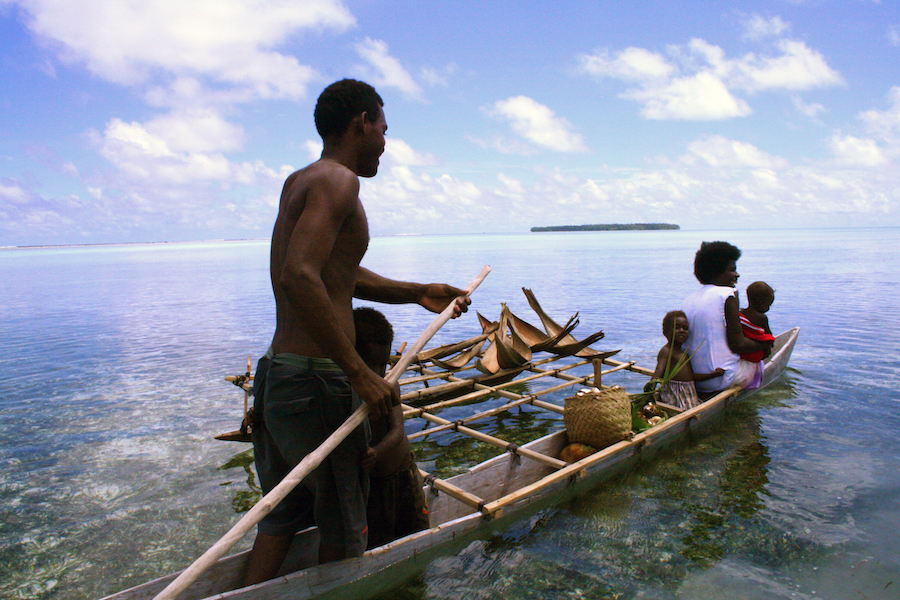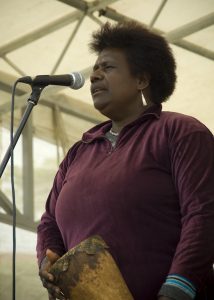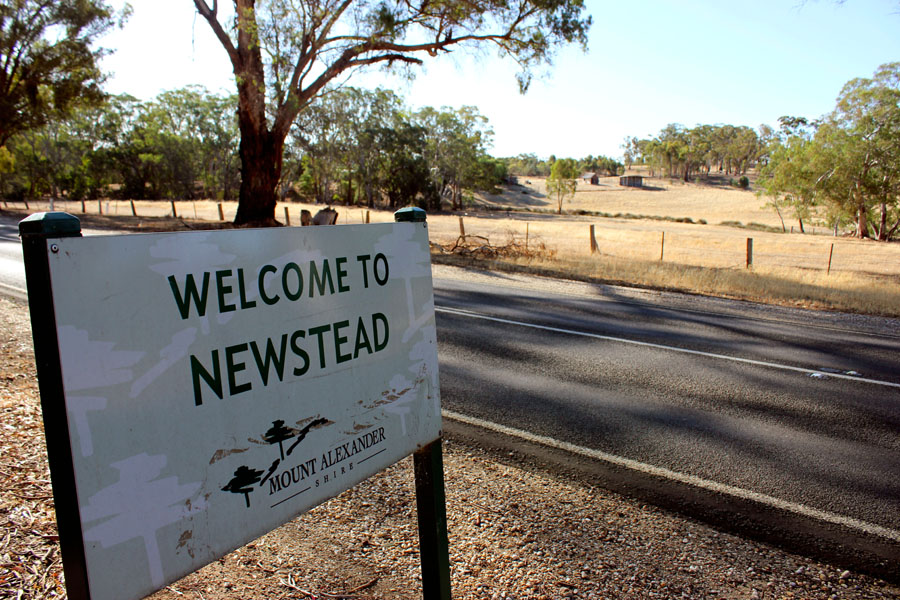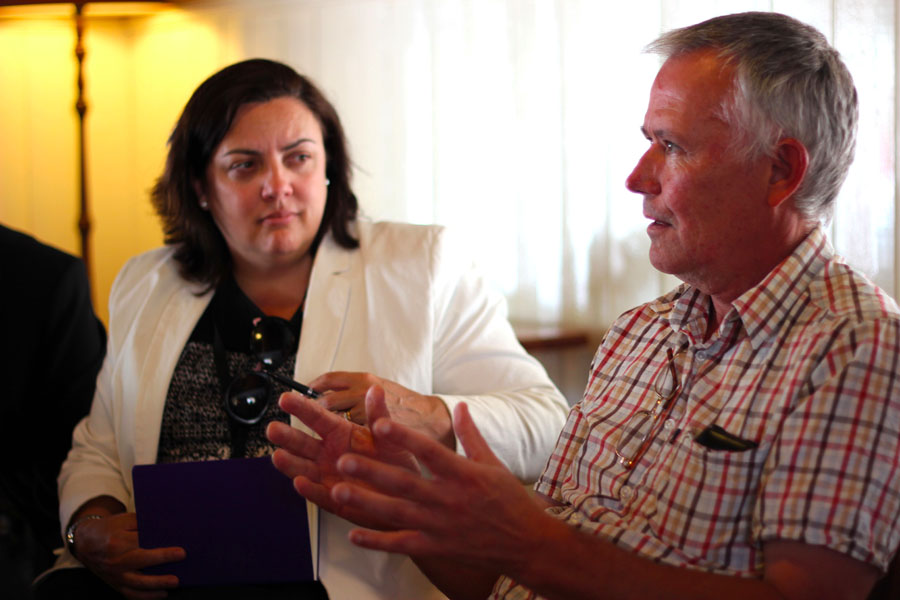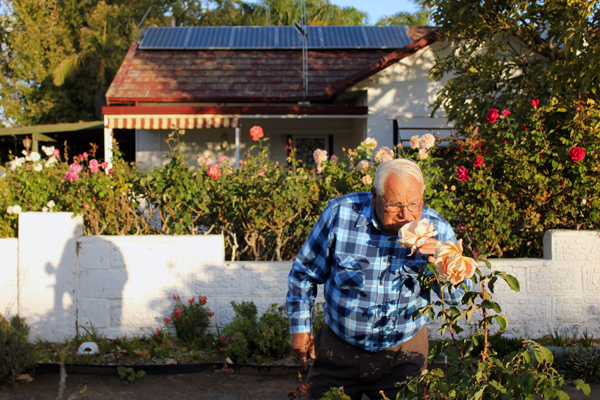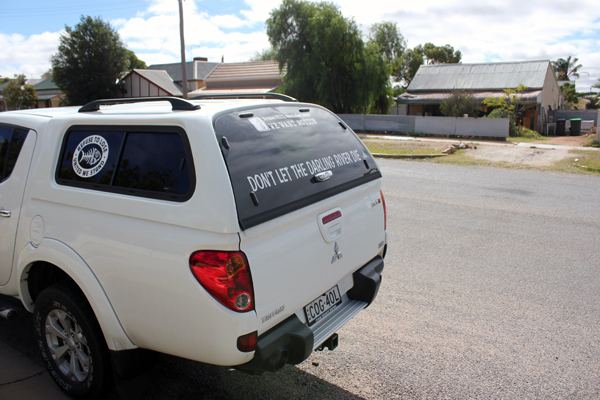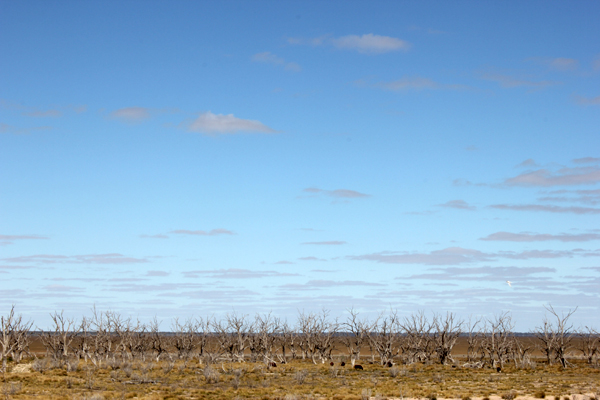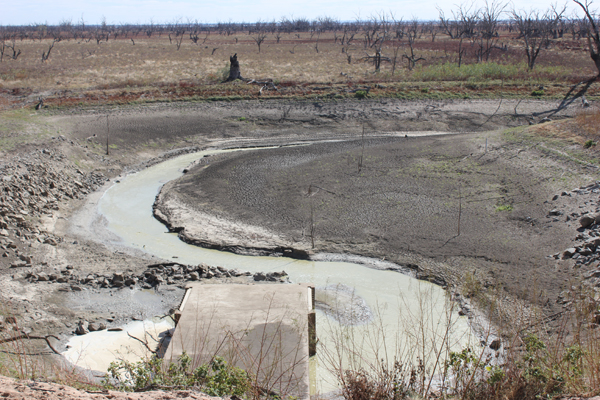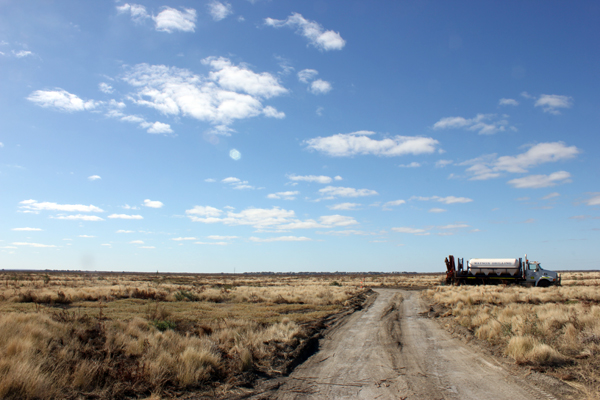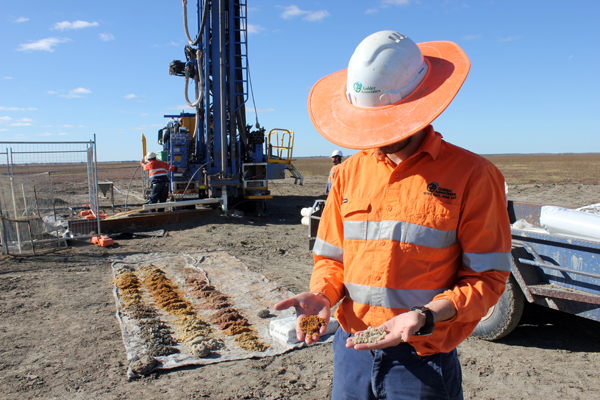Some Pacific Island communities are already moving themselves beyond rising tides, but there’s nothing simple about how, why or when they’re doing it.
FOR the last ten years, Ursula Rakova has been trying to move her small community to higher ground.
Rakova grew up on the Carteret Islands, Papua New Guinea. “It’s beautiful – like white, sandy beaches,” she says. “The sea is very clear. I mean, if you wanted a holiday, that is a place you will want to go – except that, if you intend to go for two weeks, you should bring extra food to cater for a month, in case the storms decide to come.”
The atoll is in the South Pacific, three hours by boat “on a really calm day” from Buka, the northernmost island of Bougainville.
A decade ago, at the request of her elders, Rakova founded an organisation called Tulele Peisa – which means “sailing the waters on our own” – to guide her people’s relocation. She toured Australia in April this year, to muster support and funds for the move, and to advocate for climate change mitigation. One evening at the University of Melbourne, she told a small audience: “We can no longer tell when the strong winds are coming. The climate is changing and changing fast.”
Progress, however, has been slow. Rakova says the Carteret Island population numbers 2700. The Catholic Church donated four parcels of land in Bougainville. So far, only ten families, just over 100 people, have moved to one of those plots, at Tinputz.
Rakova prizes the carefulness and thoroughness of the transition process, but the delays are a source of anguish. “As I’m talking to you, the schools on the island are closed,” she tells me. “Why are they closed? The children cannot get enough food to get them to concentrate in class.”
“The Carterets will not be underwater soon, but growing food is becoming very very difficult. Sustaining lives on the island is the biggest question and it’s urgent,” she says. “I thought the government in Bougainville would have declared a state of emergency on the Carterets many years back.”
The Carteret Islanders’ new settlement at Tinputz is just one example among many Pacific Island communities in flux – from tiny villages though to whole cities, from mere metres to thousands of nautical miles, on someone else’s land or their own. In the media, Pacific islands are rapidly populating with apocryphal climate change “firsts”: the first islands to disappear, the first “climate refugees”, the first village to relocate, the first city to move, the first nation to disappear.
But as Rakova knows too well, what’s happening isn’t straightforward. It’s a complex phenomenon, one that encompasses lived-experience and science, perception and propaganda, concepts of justice and questions of land. So why are people planning to relocate in the Pacific? Is it something new? Who’s talking about it, and what are they saying?
Is it climate change?
In 2012, Dr Simon Albert was out on a boat with an old man from the Solomon Islands. “He pointed at a reef, and said: ‘There used to be islands there – I was camping and fishing here with my son ten years ago,’” Albert says.
The researcher, from University of Queensland’s school of civil engineering, was surprised. It prompted him to search for old photos. “Sure enough, ten years ago, it was a significant, five-hectare island,” he says.
Later, he spent weeks in a dusty archive in Honiara, seeking out aerial images of over 30 islands going back to just after World War II. After detailed analysis, the researchers concluded that five islands had disappeared and a further six had shrunk severely. “These aren’t little ephemeral sand cays,” Albert says. “These are islands with substantial tropical vegetation on them. There’s a reasonable chance they’re 1,000 years old.”
The results were published in May this year, and induced an unexpected frenzy among media eager to report on frontline evidence of climate change. The results were more nuanced, however: Albert and his team attributed the sea-level rise to both climate change and climatic cycles.
“The Solomons, over the last 20 years, has been this perfect storm of high rates of sea-level rise, more trade winds and high wave energy,” he explains. But that doesn’t diminish the meaning of the findings: the conditions in the Solomons provide “insight into the future impacts of accelerated sea-level rise”.
At the time Albert began that paper, he and his colleagues were working on a plan for the wholesale relocation of Taro, the provincial capital of Choiseul, in the Solomon Islands. It was reported as the “first township” in the Pacific to relocate because of climate change. (Taro remains in the same place, however: “The sums of money are significant,” Albert says ruefully. “They’re waiting for someone to knock on their door with 100 million dollars.”)
The threat of climate change was just one of the drivers for the relocation plan, alongside pressing concerns of population growth, coastal erosion and tsunami risks. But the prospect of increasing rates of sea-level rise did change the equation. “It no longer made sense to invest in infrastructure on a place that has a very defined life,” he says.
The case of Taro offers a good case study for the environmental issues elsewhere in the western tropical Pacific, Albert explains. Erosion and flooding threaten villages and infrastructure in many places, but these problems are largely caused by extreme weather, seawalls or inappropriate planning and development – not just sea-level rise propelled by climate change.
The Carteret Islands are another of the “firsts”. Professor John Connell, a geographer from the University of Sydney, began a recent paper, in Asia Pacific Viewpoint, with a startling quote lifted from an article published online in 2014. It claimed that the Carteret Islanders were the first entire community in the world to be displaced by climate change. “The island they call home will be completely underwater by 2015.” (As Rakova told me: it isn’t, and won’t be any time soon.)
Connell has been writing about the Carteret Islands since the 1980s. Despite noting that scientific studies have been absent there, Connell surmised that the primary cause of the islands’ problems is “human influence” – clearing mangroves, dynamiting reefs and building sea walls – along with cyclical weather extremes, such as king tides. Sustenance, too, has been a long-term problem. From the 1960s, he said, patrol reports by the Australian colonial administration “commented on food and timber shortages, and occasionally made reference to malnutrition”.
Climate change is present in the Pacific – as everywhere – but its effects on people and settlements are hard to delineate. A 2014 report by Australia’s CSIRO and Bureau of Meteorology described a trend of more warmer days and nights in the Western Tropical Pacific, but variable rainfall, variable rates of sea-level rise, and no clear signal in the number of intense cyclones. Its long-term projections include a doubling or quadrupling in the frequency of extreme rainfall by 2090, as well as rising seas and fewer, but more severe, tropical cyclones.
Does it matter?
In early 2015, Jillian Campbell travelled with local researchers around Nauru, Kiribati and Tuvalu, asking nearly 6000 people about their basic needs, environmental problems and migration patterns. It was a project of the United Nations Economic and Social Commission for Asia and the Pacific. The researchers told participants it was about climate change, but from then on, they didn’t mention the hot-button words. “We didn’t want to bias the survey, because climate change is becoming such a catchphrase,” Campbell says. Instead, they asked questions about people’s observations of flooding or food availability.
In her findings, however, Campbell connected their answers to the impacts climate change. Most people in each country have experienced climate change impacts, she says. They reported things like increased flooding, saltwater intrusion and drought. In Tuvalu and Kiribati, seven out of ten people said they might need to leave if those problems grew more acute.
“I was surprised at the number of people who feel they’d have to migrate if things became worse,” Campbell says. Livelihoods are especially precarious in the outer islands of Kiribati. “I think people are really struggling to survive, and if climate change worsens any of these things, they won’t be able to.”
When that kind of need arises, the precise degree to which climate change is culpable is unimportant. But there are reasons why the causes and semantics do matter: the adaptation decisions villagers and governments make, and their ability to marshal funding, is influenced by the framing of their problems. Should people move, or are there other solutions? Who decides? Who owns the land? Who should go? Where to?
Christine Fung has been wrestling with these questions – and many more – for the last three years, working on the Fijian government’s forthcoming relocation guidelines. “As the consultations went along, it became very apparent that it is quite a complex issue,” she says.
Fung is the technical advisor on a programme called ‘Coping with Climate Change in the Pacific Island Region’, coordinated by development agencies GIZ and Pacific Community.
In Fiji, over 60 villages have already been identified for relocation and the issue often makes the front page of the Fiji Times. As the government prepares its guidelines, Fung has been collating the lessons from previous relocations, such as the stalled attempt to move the village of Narikoso, on Ono Island.
In Narikoso, the coastline has eroded about 15 metres in the last three decades. A few years ago, villagers decided to relocate to higher ground close by, within its customary land. “On that request, the government cleared a hill behind Narikoso for the new site, but the villagers thought it was an unstable area,” Fung explains. “The decision for the entire village to move was largely based on emotions and misconceptions rather than real scientific studies.”
Subsequently, technical assessments have indicated that only the first row of houses is now at risk. The erosion had been worsened by a seawall built in the 1960s. “Unfortunately, in the process of clearing the new site they also removed mangroves and coastal vegetation – the very environment that was protecting the village,” she says. So far, no one has moved, but a partial relocation will begin soon.
“Relocation should be the last option,” Fung says. “But regardless of the cause, if people’s lives are under threat, then they need to move.”
Moving close
Vunidogoloa, on the island of Vanua Levu, is another of “the firsts”: it’s often described as the first community to permanently relocate due to climate change. In 2014, the village retreated about 20 minutes walk from the coastline, but still within its clan land.
Dr Celia McMichael, an anthropologist at the University of Melbourne, travelled to Fiji in late 2015 and again in June 2016, visiting several communities. She says relocation is being driven “in villages where there is a charismatic leader who is clear that they’re affected by climate change”. That’s the case in Vunidogoloa, where headman Sailosi Ramatu has appeared in many media interviews.
McMichael’s ongoing research is about what happens next: “When it comes to the crunch, what is the experience of moving? How does it affect their lives and livelihoods, and the future for their families and communities?” In Vunidogoloa, people told her they’re happy with their new site. The old village was flooding often, and the new one is much more accessible – it’s right on a bus route to the market. The change has influenced village life: dwellings are smaller, so people now live as nuclear families. For the time being there’s no church and some people worry that the devoutly Methodist congregation is splintering. And because it’s hilly, some elderly people feel less mobile and more isolated.
But people’s sense of belonging wasn’t tied to the old location. “They said they have wanted to move for decades,” McMichael explains. “Everyone narrates the village as mobile. Historically, people used to live up in the hills because there was a threat of an attack coming from the sea. Then, after colonisation and ‘missionisation’, people came down to the coastline.”
In Vunidogoloa and some other Fijian villages, she says, people are telling a story of mobility and agency at the same time as a story of being struck by climate change. The relocations offer a contrast to the spectacle presented in international media, where people are often reduced to “climate refugees” in waiting.
The notion of climate refugees is very much contested. Among researchers there’s widespread agreement that worldwide, the impacts of climate change will cause more people to be displaced internally than internationally. Some academics have also criticised environmental campaigners and journalists for employing the suffering (or threat) of climate refugees to spruik their cause or make headlines. In a 2010 paper, ‘Wishful Sinking’, Dr Carol Farbotko described “a problematic moral geography… only after they disappear are the islands useful as an absolute truth of the urgency of climate change, and thus a prompt to save the rest of the planet.”
Moving far
In Fiji so far, planned village relocations generally involve relatively small retreats within clan land. When people plan to move onto someone else’s territory, the task becomes even more complex.
Professor Jane McAdam, from the law faculty of the University of New South Wales, says there’s a set of “very, very tricky questions to be balanced”. In a paper published in 2015, together with Elizabeth Ferris from Brookings Institution, she raises issues ranging from access to land and the maintenance of cultural identities, to decision-making authority, consent and compensation, and, subsequently, the difficult prospect of guaranteeing livelihoods, infrastructure and public services.
In mid-2014, Kiribati received global press for its decision to purchase 20 square kilometres of land on Vanua Levu, Fiji. Then-president Anote Tong was quoted stating it might be used for relocation as a last resort. Subsequently, he said the purpose was to guarantee food security.
Tong was also renowned for championing the concept of “migration with dignity”. But the government’s stance is more a vision statement than a policy: an aspiration to create opportunities for I-Kiribati to migrate and to lift education levels so they’re more attractive as migrants. For now, however, migration options remain limited. The population is over 100,000. Every year, 75 families are eligible to migrate to New Zealand. To work in Australia, I-Kiribati can apply for (difficult to get) skilled worker visas, seasonal worker visas, or one of only 250 places under the new two-year “micro-state visa”, divided between Kiribati and the much smaller nations of Nauru and Tuvalu.
McAdam says cross-border migration at present remains a matter for individuals, rather than entire communities. But with more planned relocations on the horizon, she says we can still learn from two historical cases in the Pacific, and the legacies borne by subsequent generations.
In December 1945, the British Phosphate Commission expanded its mining operations on the island of Banaba, at the expense of the locals: they were moved to Rabi Island, in Fiji. Then, in 1947, just two years later, people from another Pacific Island, Vaitupu, settled on Kioa, an island close by.
Whereas the Banabans (who were from present-day Kiribati) were forced to leave, the Vaitupuans (part of present-day Tuvalu) initiated the move themselves as a long-term precaution against overcrowding.
When McAdam visited, nearly 70 years later, she found a stark contrast. “The Banabans thought they had been coerced in moving, that they’d lost control over their resources and their destiny,” she says. “The Vaitupuans say: ‘We pulled together as a community, we were pioneers, we really built something’. It wasn’t always rosy, but certainly the idea of relocation came from within the community.”
McAdam says it’s clear that climate change will exacerbate existing vulnerabilities, and act as tipping point for displacement. The experience of the Banabans provides a warning about the sense of injustice that can endure when people are resettled without being involved or in control. “People need to have access to participatory processes,” she says, “particularly those who might not have a strong formal voice at the table.”
We are moving
Ursula Rakova lives at the Carteret Islanders’ new settlement at Tinputz, on Bougainville. At night she tries to catch up on emails, because in the daytime, she’s usually caught up doing the work of connecting with “the host community” – contributing to local fundraising and various celebrations. The challenges are deep: the land Tulele Peisa was given by the Catholic Church is in four locations, one on a different island. The Carteret Islanders’ language is Halia, which isn’t one of the 43 languages spoken on Bougainville.
Tulele Peisa is documenting aspects of life and culture on the Carterets to form part of the ongoing school curriculum. Custodianship of the land is matrilineal in the Carterets, Rakova says, and so it is with the new plots of land on Bougainville. Rakova has found men more resistant than women to establishing the new location. “It’s just about being lazy to do manual work,” Rakova laughs. “Because all they do is sit around the coconut trees, in the shade, and do nothing but tell stories. We feel it’s actually the women who are turning the minds of their husbands around.”
Rakova hopes that in another ten years, they will have settled all the parcels of land they’ve been given so far, and maybe secured more. “But I know it will not be,” she says, because funding has been too hard to come by. “The sustainable livelihood program is progressing quite well, but no one is so willing to fund the construction part of the program.”
There is something else she is clear about – she doesn’t accept that the Carteret Islanders are refugees. “We are internally displaced. We are relocating because of the rising sea levels and the impact of what’s happening destroying our food gardens, eroding our shorelines, breaking our island in half. We are moving, but we are moving with dignity. We are moving with our culture, our way of life.”
Read the article at Nature Climate Change
This article was published in Nature Climate Change, September 2016
